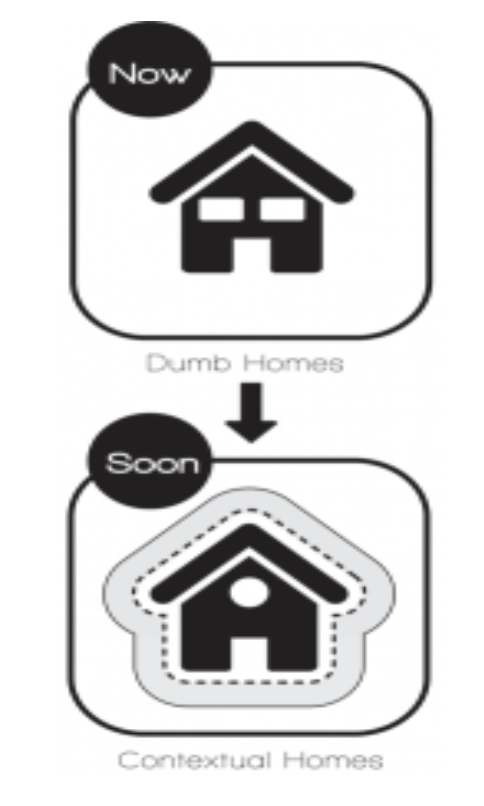Sneak Peek Into Digital Context 2.0
We have decided to share sneak peeks of our Digital Context 2.0 book that is available to purchase on Amazon. Enjoy!
Just think about how many things there are in your home that could be connected to the Internet of Things:
• Doors, windows, cupboards, drawers, closets, and shelves
• Floors
• Outlets, lighting, wiring, faucets, plumbing, HVAC, and thermostats
• Shirts, pants, socks, shoes, underwear, blankets, pillows
• Sports equipment, toys, balls, bicycles
• Tool boxes, hammers, drills, ratchet sets
• Sound equipment, door bells, and alarms
• Razors, shaving cream packaging, soap dishes, lotions, hair dryers, and all other bathroom items
• Food packaging, dishes, cooking utensils, mixers, microwaves, fridges, and dishwashers
• Plants, decorations, pictures, and memorable items
• Irons, fresheners, washers and dryers, and laundry baskets
And these are just the things that make up your daily life. Think about how your life would be affected by the following:
• If your home were enabled to support your medical needs. From the dispensing of pills to the monitoring of glucose, devices you already use should be able to talk to each other and support you.
• If you could manage your home for greatest financial benefit and risk reduction. Think about monitors to reduce wasteful uses of energy and data collection that tracks your spending patterns on food, which then makes recommendations on what produce to buy based on supermarket availability, data that the system also tracks. It could happen.
To the last point, Greg Geib, a research strategist with American Family Insurance and a member of the Digital Consumer Collaborative said recently, “We have to push our thinking around the role of data in consumers’ lives and how we all can benefit from being a part of the same ecosystem.” If a watch is not a watch, then in a contextual world, insurance is more than just the insurance…Greg gets that.
Notice that I left off of the list the things that are almost certainly already in your home and connected to the Internet (which indeed, would be far less useful and versatile if they were not connected to it): gaming systems, tablets, TVs, computers, and of course, the brains of it all, your smartphone. Skeptics within your company will say that there are a lot of things that could be monitored by sensors that shouldn’t be. The consumer doesn’t want it, they will say. There will be others within your organization who will see this new technology as a beautiful blue space opportunity. “What we could do with that data!?” these others will exclaim. Which side speaks the truth? To be sure, there are caveats to bear in mind. Consumers will only want a contextual home (or store, or car, or hotel) if the tools within the environment help them to close the gap between thought and action. You can’t just put sensors in things and expect consumers to be wowed. You also can’t just be intrusive or disruptive to people’s lives. It has to help get a job done. And the data? There needs to be a purpose for collecting data; and permission given, and the ability to deliver on your promise; otherwise you’re not in.
Thank you! Watch out for more great content from our book coming soon!



